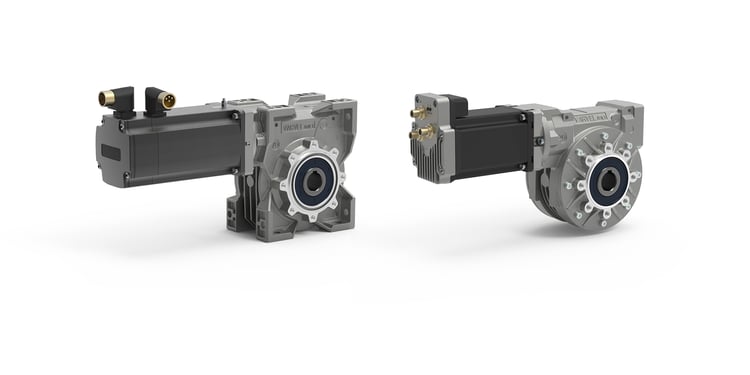The gearbox is the heart of every movement in all applications requiring low-speed power transmission. A gearmotor can be defined as a special compact unit consisting of an electric motor and a gearbox.
The main feature of these systems is the ability to output the torque needed to work at a given speed by transforming electrical energy into mechanical energy.
Gearboxes have always been a key component in mechanical applications throughout industrial-technological development and their usefulness is beyond doubt. Gearboxes are mechanical geared transmissions designed to transfer the motion of a motor to the machine to which they are applied, reducing the speed to adapt to specific operating requirements.
By reducing the speed, the gearbox multiplies the delivered force, technically known as torque. A typical, simple and universally recognized example of torque is the bicycle gearing that allows cyclists to apply the same force to spin fast down long stretches or climb the toughest Alpine passes with ease.
The convenience of being able to drive large machines using small motors makes gearboxes the most rational, reliable and cost-effective solution for transmitting power.

How worm gearmotors work
In worm gearboxes, the motion is transmitted from the input shaft (i.e. the worm shaft) to the slow output(i.e. the worm wheel of the gearbox). This implies several advantages, including minimum space requirements in proportion to the reduction-to-torque ratio and an excellent price-to-performance ratio.
Worm gearboxes are also distinguished by their particular features in terms of:
- Ruggedness due to their high overload capacity
- Ease of use and maintenance
- Application flexibility
Gearmotors are central for industrial applications, particularly concerning process automation regardless of their type (worm or geared) and whether they are driven by a hydraulic or an electric motor.
Worm gearmotors for drives are generally characterized by an excellent quality-to-price ratio, low maintenance, and remarkably quiet operation, guaranteed by smooth running. Their small footprint saves valuable space needed for their installation in the machine. Quiet, vibration-free operation is ensured by the force transmission linearity to the input shaft.
The features of Varvel worm gearboxes
Varvel has an array of worm gearboxes:
- Single-stage
- With cylindrical pre-stage
- Two-stage
The peak power of these gearboxes is 25 kW. Reduction ratios range from 5:1 to 10,000:1. The peak output torque is 3020 Nm.
The worm shaft have a standard ZI profile generated with a shaped grinding wheel to achieve high angular precision in motion transmission.
Varvel worm gearboxes are also characterized by:
- Standard Freudenberg oil seals
- Standard Klueber PG oil
- High-quality, reduced backlash CM screwshaft axis bearings
- Reduced backlash, less than 25' as standard
- Controlled reduced backlash available on demand
- Low-friction FKM Freudenberg seal rings available on demand
- Optional vent plug
All Varvel worm gearboxes are made to stock to guarantee very fast delivery times.
Equally noteworthy is the coupling hub that Varvel has developed for the connection between gearboxes and motors (IEC, NEMA, BRUSHLESS, STEPPER). This flexible solution is an interesting alternative to the key coupling and does not increase the overall dimensions of the gearmotor.
Various types of motors can be installed simply by changing the connection flange. More than one hundred servomotor flanges designed for installation on Varvel gearboxes are available to date.
Get in touch with our consultants for detailed information or advice for your specific application.

